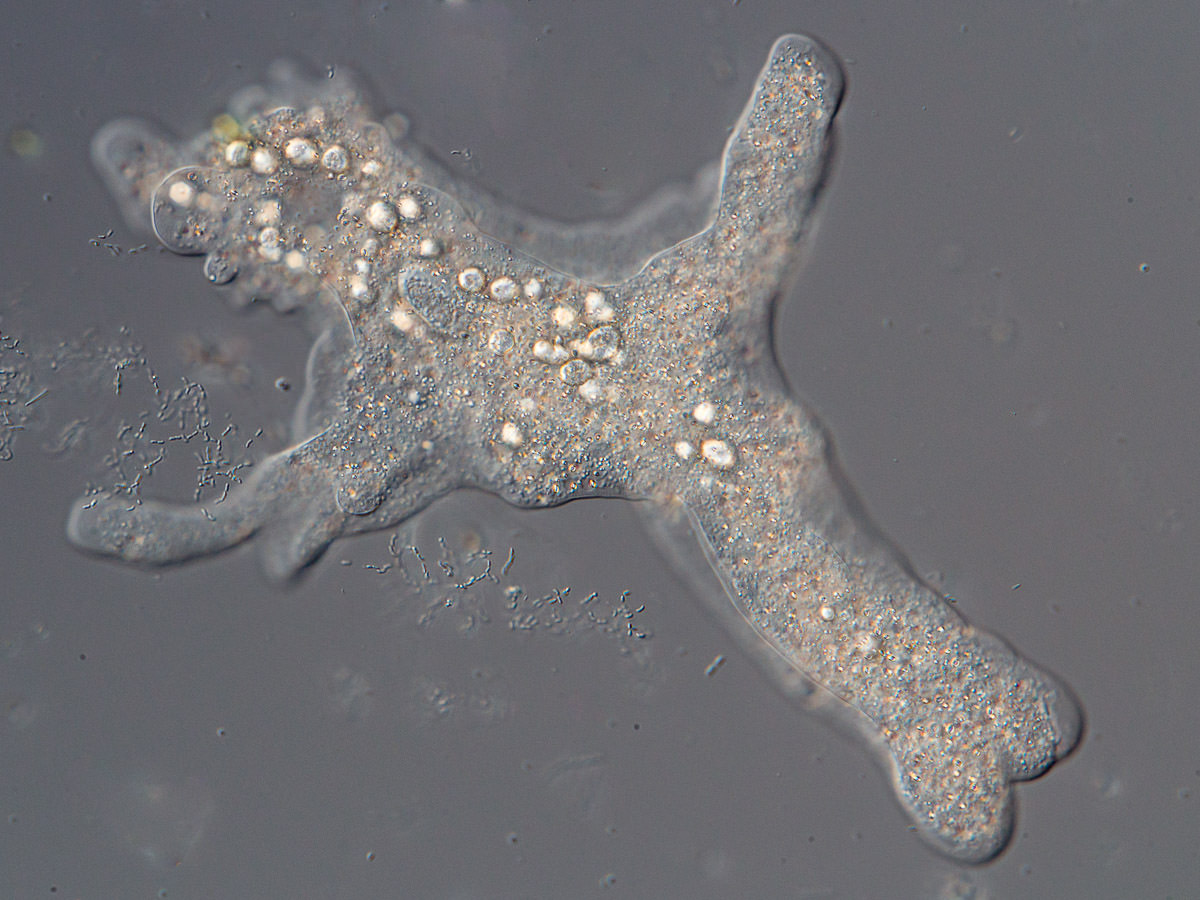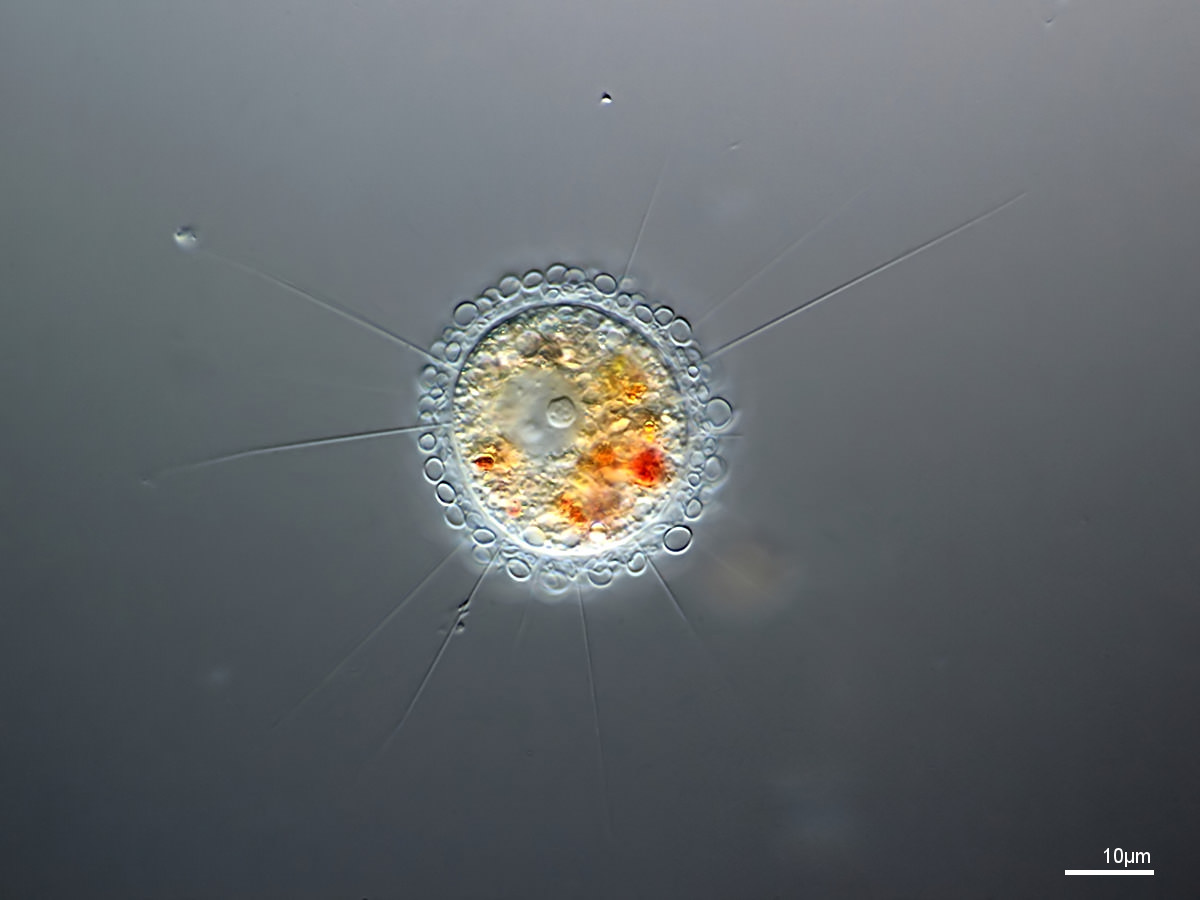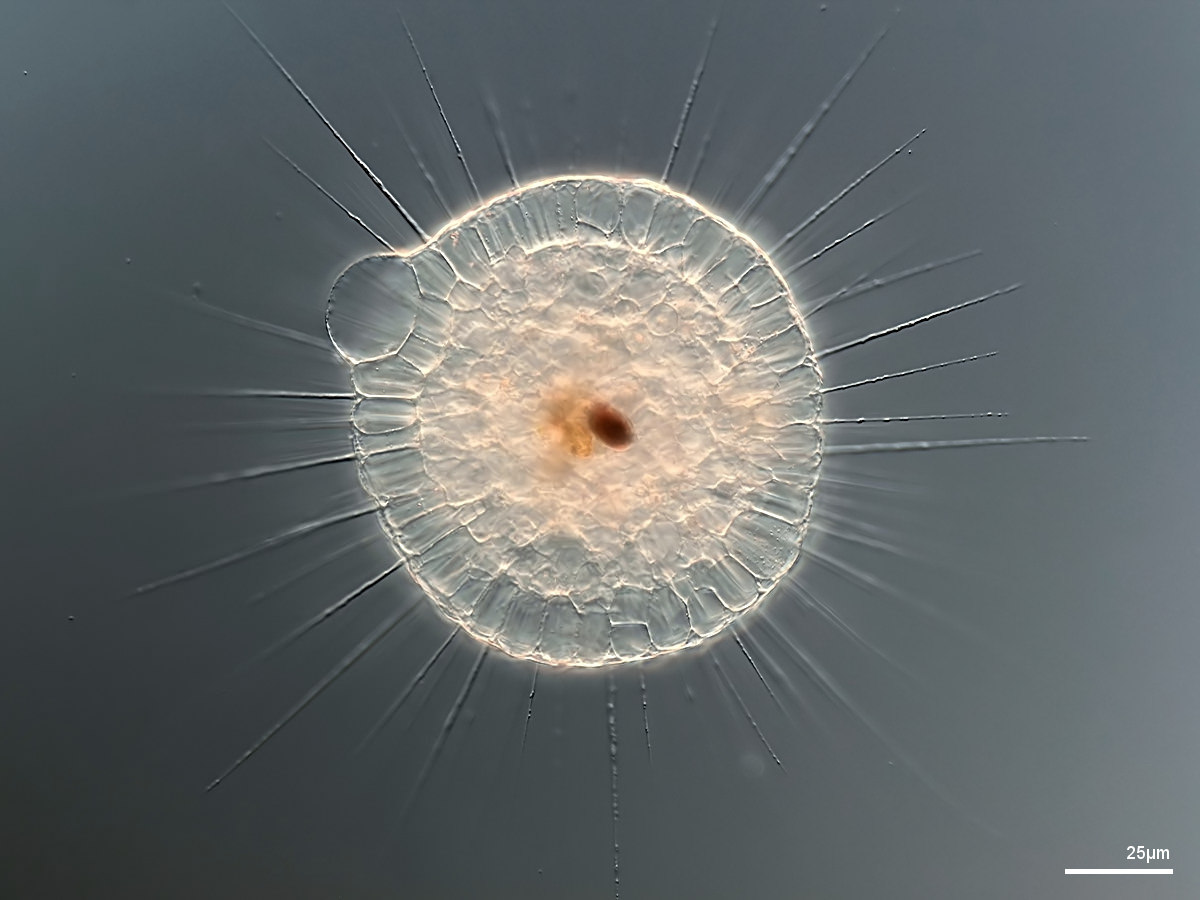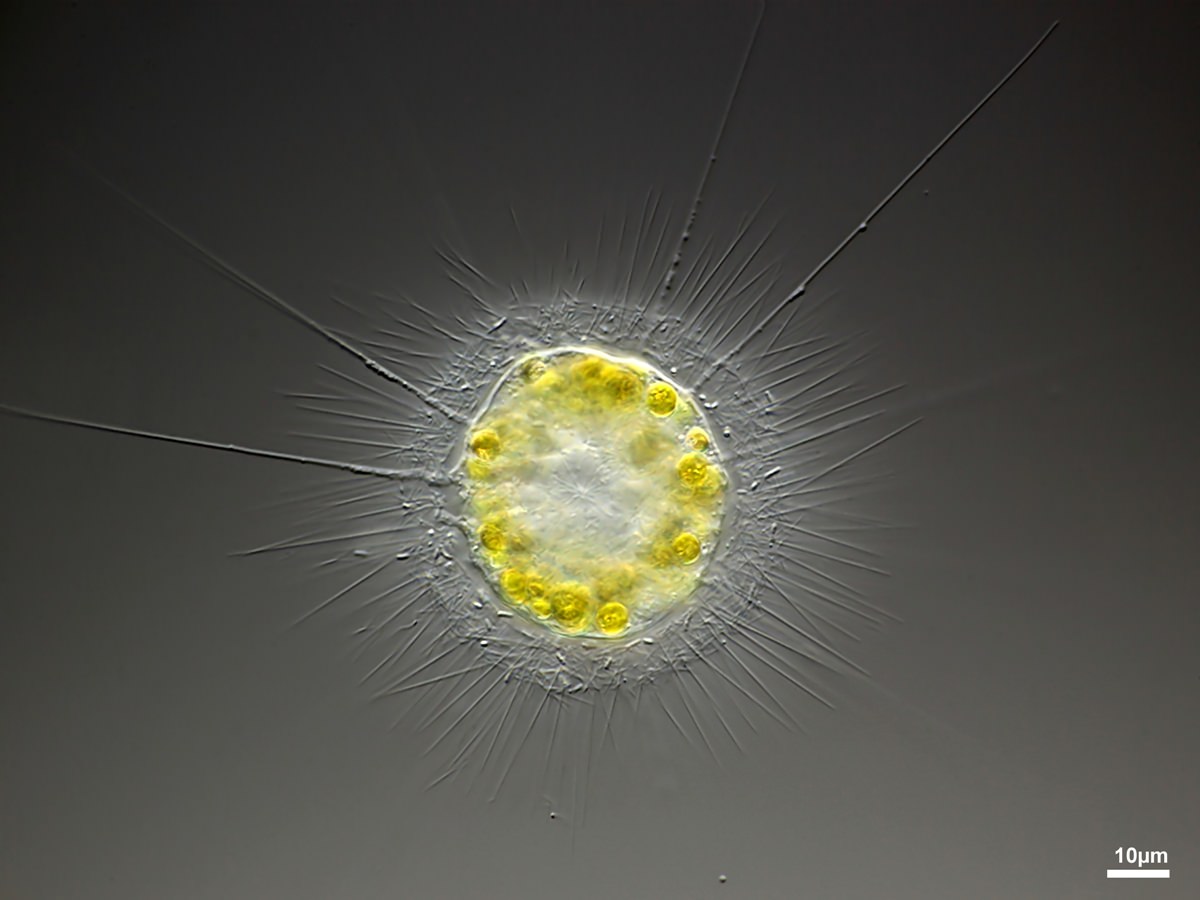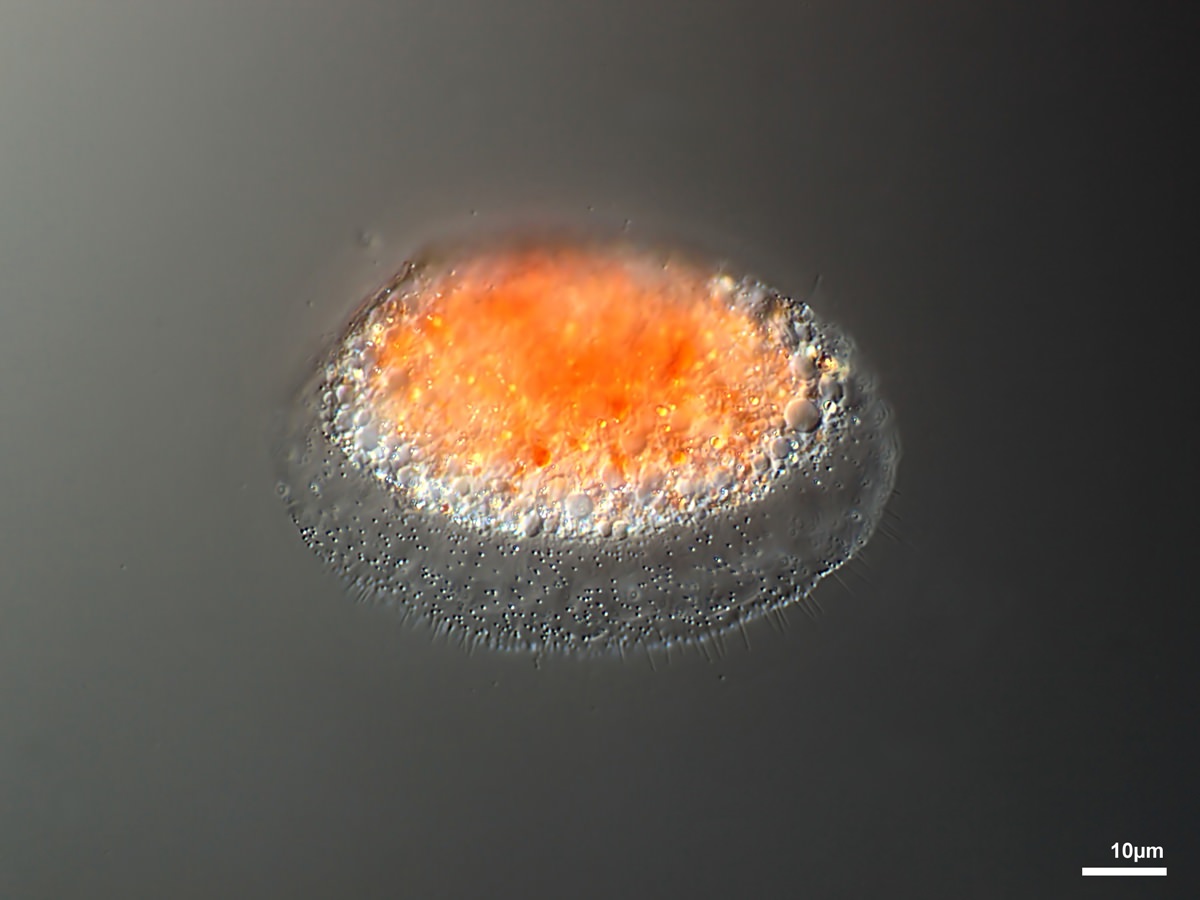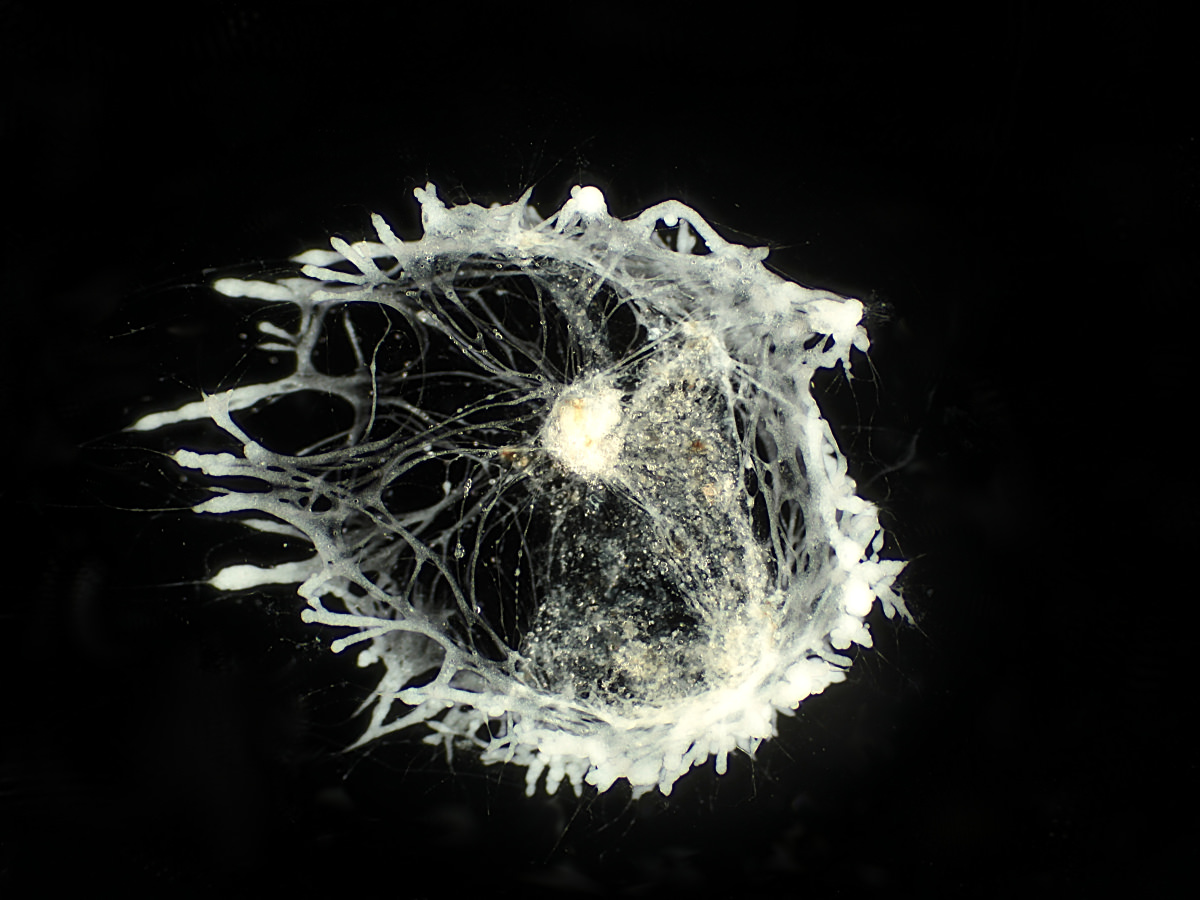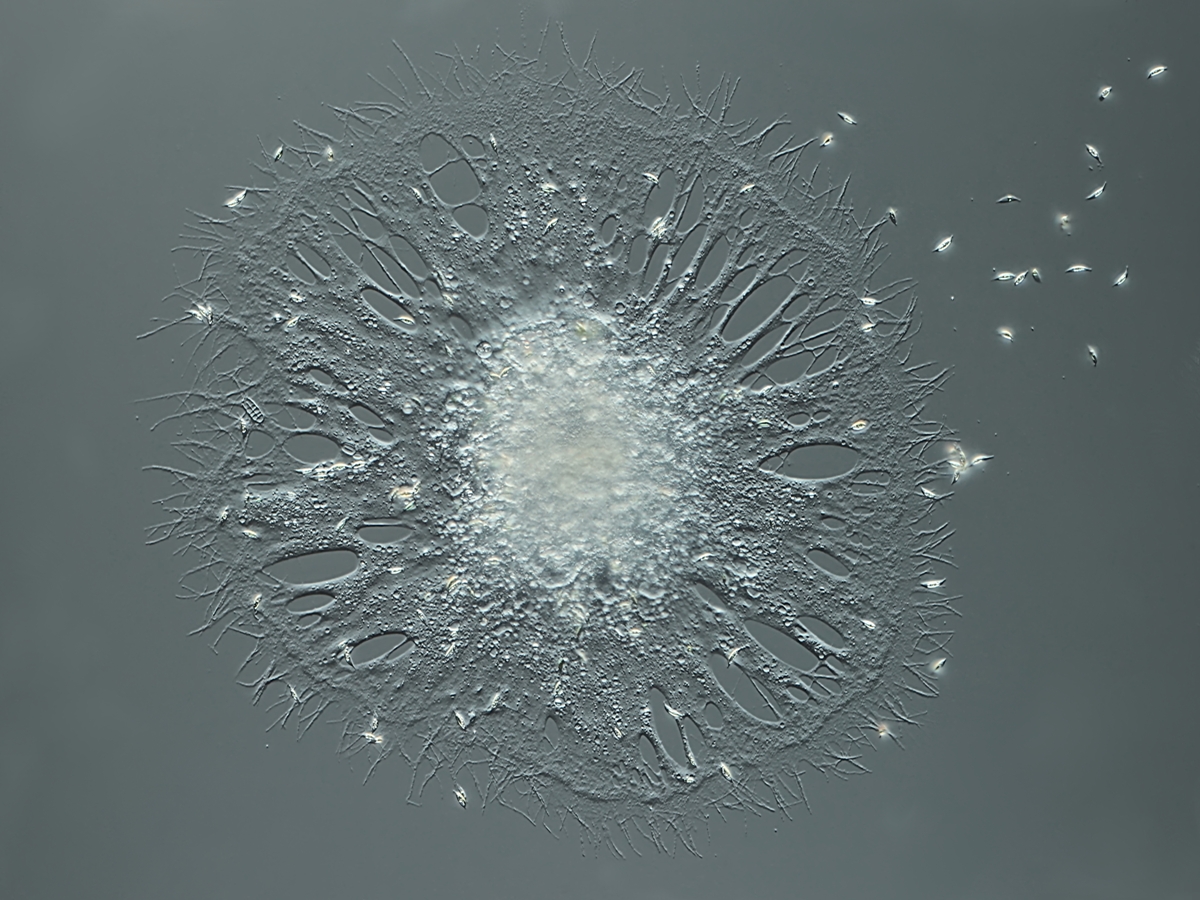Centrohelea Kühn 1926, stat. n. Cavalier-Smith 1993
Non-flagellate heliozoa with axopodial axonemes; nucleus eccentric; centrosome central; two types of siliceous scales present ancestrally (flat inner tangential plate scales and elongated, usually pointed, outer radial spine scales), but outer scales or both scale layers secondarily lost in several derived lineages.
Details